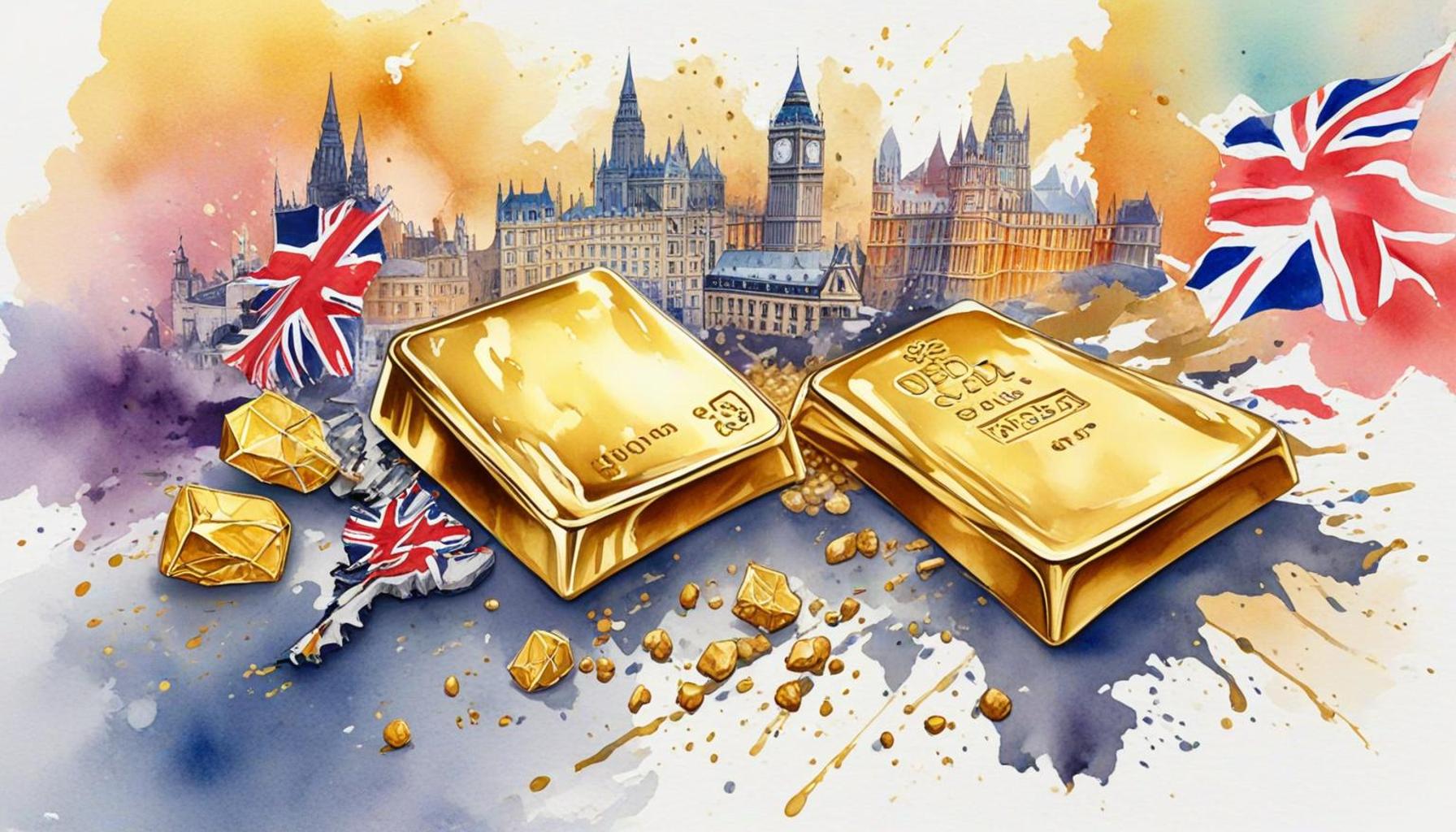Investing in Gold and Precious Metals in the UK: Is It Worth It?

Understanding the Appeal of Precious Metal Investments
Investing in gold and precious metals has captured the interest of many, especially during times of economic uncertainty. With the potential for market fluctuations, investors are on the lookout for assets that provide stability and security. In the UK, where market dynamics can be influenced by everything from political changes to global economic conditions, evaluating gold and precious metals as viable investment options is crucial.
Benefits of Investing in Precious Metals
Those looking to protect their wealth often turn to gold and silver, and for good reason. One of the most significant advantages is their role as a hedge against inflation. As the cost of living increases and currency values decrease, precious metals traditionally maintain their purchasing power. For example, during the 1970s, a period characterized by high inflation, gold prices surged, showcasing its reliability as a store of value.
Another critical aspect of investing in these metals is portfolio diversification. Including assets like gold and silver can help spread risk across your investments. For instance, if you primarily invest in stocks and those market conditions turn unfavorable, having precious metals in your portfolio can potentially cushion against losses, as these metals often move inversely to stock prices.
The global demand for gold and precious metals also enhances their attractiveness. Whether it’s for jewelry, industrial use, or investment, the continual demand worldwide helps to sustain their value. Markets in India and China, for instance, demonstrate significant consumption, further stabilizing prices globally.
Challenges to Consider
While the benefits are compelling, it is essential to recognize some challenges associated with these investments. Market volatility can pose serious risks, with prices seeing substantial movement over short periods. The factors influencing these fluctuations can range from geopolitical events to changes in central bank policies.
Moreover, storage and security become paramount when investing in physical metals. Unlike stocks or bonds, which are paper assets, gold requires secure storage solutions, such as safe deposit boxes or private vaults. This necessity adds an additional layer of complexity to the investment process.
Another consideration is liquidity. Although gold is generally seen as a liquid asset, the market conditions at the time of sale can affect how quickly and profitably you can sell your precious metals. For instance, selling gold during a market downturn could yield lower prices compared to disposing of it when demand is high.
Throughout this article, we will delve deeper into these benefits and challenges, arming you with comprehensive insights to decide whether investing in gold and precious metals aligns with your financial goals.
SEE ALSO: Click here to read another article
Advantages of Investing in Precious Metals
When considering investments, many individuals in the UK find themselves drawn to gold and precious metals for their unique benefits. Understanding what makes these assets attractive can help you make informed decisions and align your investments with your financial objectives.
Hedge Against Economic Instability
One of the most appealing aspects of investing in gold and precious metals is their ability to act as a hedge against economic instability. During times of political turmoil, such as Brexit, or global financial crises, markets can become erratic. Precious metals, particularly gold, tend to retain their value during these turbulent times. For instance, during the financial crisis of 2008, demand for gold surged as investors sought stability. This behaviour illustrates how gold can serve as a safe haven when traditional markets experience unsettling fluctuations.
Inflation Protection
Precious metals have historically performed well during periods of inflation. As inflation rates rise, the purchasing power of money decreases, making tangible assets like gold and silver more desirable. For example, between 2005 and 2012, gold prices rose significantly, aligning with growing inflation concerns. By investing in precious metals, you can potentially safeguard your capital against the erosive effects of inflation, maintaining your purchasing power for the long term.
Portfolio Diversification
Incorporating gold and precious metals into your investment portfolio can provide a layer of diversification. Diversification is essential in managing risk, as it allows investors to spread their capital across various asset classes. This strategy can be particularly effective in the face of stock market volatility. If your portfolio comprises mainly equities, introducing precious metals can act as a buffer when stock prices drop. A well-balanced portfolio might include:
- 20% in equities
- 10% in bonds
- 10% in real estate
- 20% in precious metals
This example illustrates how even a modest allocation to gold and silver can stabilize overall performance during periods of market downturns.
Long-Term Value Retention
Gold and other precious metals have a proven track record of retaining their value over long periods. Unlike currencies that can be subject to devaluation, precious metals have intrinsic value that is less susceptible to systemic risks. By accumulating gold or silver, you are investing in a tangible asset that has been valued for centuries, making it a potentially reliable long-term investment. For instance, a gold coin from a century ago can still fetch a significant amount today, demonstrating its lasting appeal and value.
As you explore the concept of investing in precious metals, these advantages serve as a foundation for understanding how they can play a meaningful role in your investment strategy. In the next sections, we will address specific challenges that come with these investments to ensure you are fully informed as you consider turning to gold and precious metals in the UK.
SEE ALSO: Click here to read another article
Challenges and Considerations of Investing in Precious Metals
While there are undeniable advantages to investing in gold and precious metals, it is equally important to understand the challenges and considerations associated with these investments. Knowledge of potential pitfalls can enhance your investing strategy and enable you to navigate the market with greater confidence.
Market Volatility
Although gold is often perceived as a safe haven, it is not immune to market volatility. Prices can fluctuate based on various factors, including changes in interest rates, currency strength, and geopolitical tensions. For example, during the early stages of the COVID-19 pandemic, gold prices initially surged, only to experience significant corrections later. As an investor, being prepared for such fluctuations and ensuring you have a long-term investment horizon can help manage expectations and risk.
Storage and Security Concerns
Investing in physical gold or silver comes with its own set of storage and security concerns. If you opt for precious metals in their physical form, you must consider how and where to store them. This may involve investing in a safe deposit box or bolstering home security, both of which come with additional costs. Moreover, this physical asset management can be cumbersome and requires careful attention to avoid theft or damage. If you are not comfortable with these responsibilities, considering alternative investment methods such as exchange-traded funds (ETFs) or publicly traded mining companies may be more suitable.
High Entry Costs
Investing in precious metals often entails a higher initial investment cost compared to other assets. The market prices of metals like gold and silver can be substantial, and additional expenses such as premiums, transaction fees, and potential taxes can add to your overall investment cost. For example, when purchasing gold coins or bullion, you may pay a premium above the current market price. As a result, potential investors should thoroughly research and evaluate their budgets to determine how much they are willing to allocate toward this asset class.
Limited Income Potential
Another significant consideration is the limited income potential that precious metals provide. Unlike stocks that pay dividends or real estate investments that generate rental income, gold and silver do not yield any cash flow. Investors may find themselves in a position where their funds are not actively generating income. Consequently, those seeking passive income through their investment portfolio may need to explore ways to balance precious metal holdings with income-producing investments.
Market Sentiment and Speculation
The value of precious metals can be heavily influenced by market sentiment and speculation. Analysts often speculate based on macroeconomic factors, and emotional reactions by investors can lead to price swings that may not reflect the underlying value of the metals. For instance, news of a potential conflict in a critical mining region or changes to monetary policy can significantly impact prices. Therefore, being aware of how such factors can sway the market will help you strategize your entry and exit points effectively.
As you weigh the pros and cons of investing in gold and precious metals, being mindful of these challenges can help you make better decisions. Addressing these considerations as part of your overall investment strategy will prepare you to navigate the precious metals market more effectively.
CHECK OUT: Click here to explore more
Conclusion
Investing in gold and precious metals can be a distinctive and potentially rewarding addition to your financial portfolio, especially in the current economic climate marked by uncertainty and inflation concerns. As we have discussed, gold and silver commonly serve as hedges against market volatility and currency devaluation, providing a refuge for investors seeking stability. However, it is crucial to approach these investments with a well-rounded understanding of both their benefits and challenges.
On one hand, the enduring value of precious metals can offer a sense of security; on the other hand, risks such as price fluctuations, storage costs, and limited income potential cannot be overlooked. Evaluating your financial situation, risk tolerance, and investment goals is key to making informed decisions. If you decide to invest, consider diversifying your assets to balance the non-yielding nature of metals with income-generating options.
Ultimately, the worth of investing in gold and precious metals in the UK depends largely on your individual circumstances and investment strategy. Regularly reviewing market conditions and staying informed about geopolitical developments will empower you to make savvy investment choices. So, whether you are a seasoned investor or a novice, armed with knowledge and a solid plan, investing in precious metals can indeed be a valuable strategy for protecting and growing your wealth in the long run.

Beatriz Johnson is a seasoned financial analyst and writer with a passion for simplifying the complexities of economics and finance. With over a decade of experience in the industry, she specializes in topics like personal finance, investment strategies, and global economic trends. Through her work on World Information, Beatriz empowers readers to make informed financial decisions and stay ahead in the ever-changing economic landscape.





